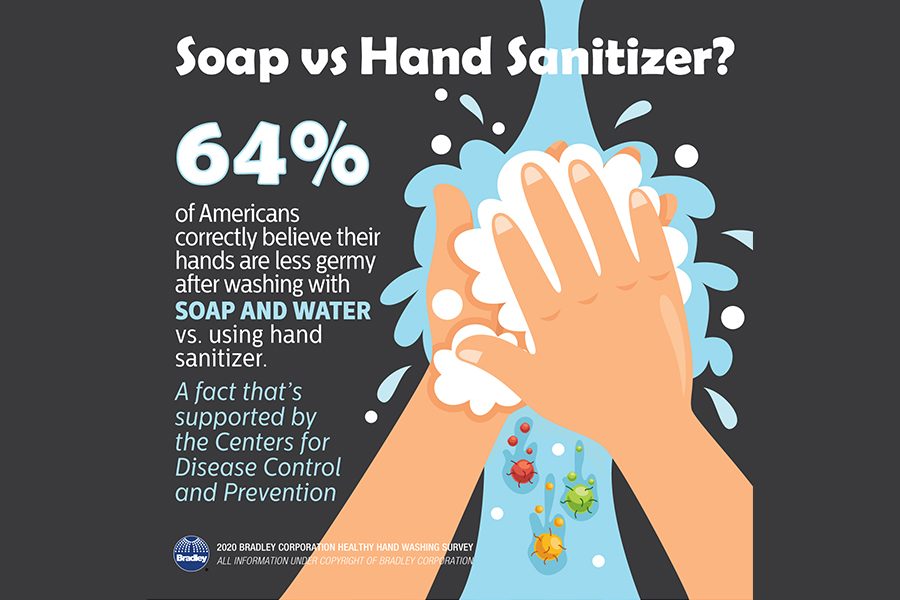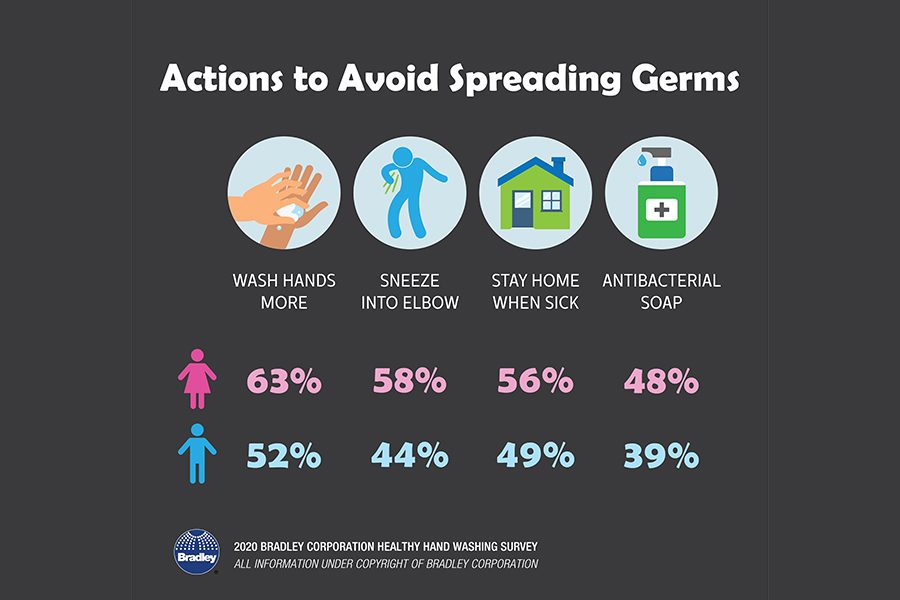Bradley Corp. Shares Hand Washing Habits Across the US Amidst COVID-19 Pandemic












For the past 11 years, Bradley Corp. has conducted its Healthy Hand Washing Survey to track American's hand washing habits and their reactions to germs, the flu and colds.
The annual survey queried American adults and youth online Dec. 11-16, 2019. Participants were from around the country, 14 years and older, and fairly evenly split between men and women (47 percent and 53 percent).
The findings revealed the following:
- Even before COVID-19 hit the United States, 60 percent of Americans were extremely or quite concerned about catching the flu, compared to just 32 percent who felt that way four years ago. Among all age groups, millennials expressed the most trepidation about getting sick.
- Fifty percent of Americans said news coverage of cold and flu outbreaks has an impact on their hand washing behavior.
- In response to flu outbreaks, 79 percent of Americans said they wash their hands more frequently, more thoroughly or longer after using a public restroom.
- Eighty-nine percent of Americans in the workforce said they consciously take steps to avoid the germs of sick co-workers or colleagues.
- Sixty-four percent of Americans correctly believe that hand washing is more effective in removing germs than hand sanitizer – a fact supported by the Centers for Disease Control and Prevention.
- When asked where they were MOST concerned about somebody not washing their hands, 40 percent said restaurants, 35 percent identified hospitals, clinics and doctors' or dentists' offices, 15 percent answered schools, and 8 percent said airports.
- When they are sick, 54 percent of Americans said they simply wave hello to greet people, 48 percent avoid shaking hands and 18 percent use a fist or elbow bump.
- At home, if someone is sick or if a cold or flu virus is going around, Americans kick into action. Sixty-five percent wipe down bathroom and kitchen surfaces, 47 percent wipe door knobs and handles, and 46 percent wash sheets and/or towels.
- In a public restroom, 93 percent of Americans try to avoid coming in contact with germs by employing evasive measures. Sixty-five percent use a paper towel when touching door handles, faucets or toilet flushers, 44 percent operate the toilet flusher with their foot, 42 percent use a seat liner or cover, 29 percent hover above the toilet seat, 29 percent use their butt to open and close doors, and 27 percent use their elbow to operate towel dispensers.
- Ninety-seven percent of Americans believe it's important to wash up after using a public restroom. However, hand washing doesn't happen all the time. Respondents said they washed their hands 86 percent of the time after using a public restroom.
- Sixty-seven percent of Americans admit they've skipped the soap and simply rinsed their hands with water after using a public restroom.
"Thorough hand washing with soap and water remains the best way to reduce the spread of disease-causing microorganisms like COVID-19," said medical microbiologist Michael P. McCann, Ph.D., professor of biology, Saint Joseph's University. "Soap and water, used as per the evidence-based recommendations of the Centers for Disease Control and other government agencies, will help reduce the spread of flu and other illnesses in the home and work place."
Bradley Corp. is a leading manufacturer of commercial plumbing fixtures, washroom accessories, restroom partitions, emergency fixtures and solid plastic lockers. For more information, visit www.bradleycorp.com/handwashing.




